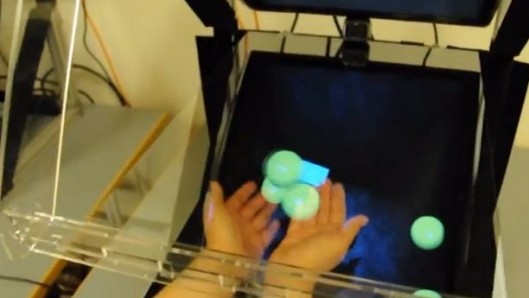By Paul Ridden
Does anyone remember the animated version of Star Trek from the 1970s? The Emmy-Award-winning series was the very first outing for the now familiar Holodeck, although it was called the recreation room back then. Despite some landmark advances in holographic technology in the years since – such as the University of Tokyo’s Airborne Ultrasound Tactile Display – nothing has come close to offering the kind of physical interactivity with virtual objects in a 3D environment promised by the collective imaginations of sci-fi writers of the past. While we’re not at the Holodeck level just yet, members of the Sensors and Devices group at Microsoft Research have developed a new system called HoloDesk that allows users to pick up, move and even shoot virtual 3D objects, plus the system recognizes and responds to the presence of inanimate real-world objects like a sheet of paper or an upturned cup.
Unfortunately, the research team hasn’t revealed too much about how its new natural user interface system works, but here’s what we do know. It’s about the size of a filing cabinet and is made up of an overhead screen that projects a 2D image through a half-silvered beam splitter into a viewing area beneath. A Kinect camera keeps tabs on a user’s hand position within the 3D virtual environment, a webcam tracks the user’s face to help with placement accuracy, and custom algorithms bring everything together in (something very close to) real time.
http://www.gizmag.com/holodesk-lets-users-handle-virtual-3d-objects/20257/


